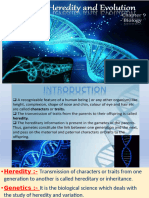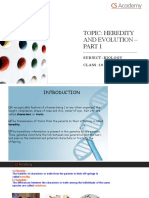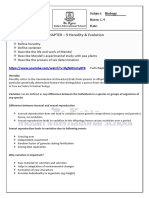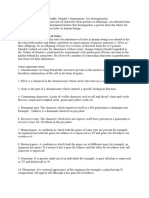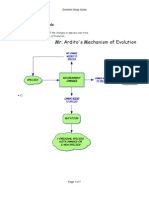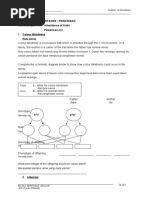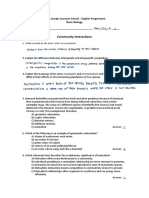Study Materials: Vedantu Innovations Pvt. Ltd. Score High With A Personal Teacher, Learn LIVE Online!
Study Materials: Vedantu Innovations Pvt. Ltd. Score High With A Personal Teacher, Learn LIVE Online!
Uploaded by
sushantCopyright:
Available Formats
Study Materials: Vedantu Innovations Pvt. Ltd. Score High With A Personal Teacher, Learn LIVE Online!
Study Materials: Vedantu Innovations Pvt. Ltd. Score High With A Personal Teacher, Learn LIVE Online!
Uploaded by
sushantOriginal Title
Copyright
Available Formats
Share this document
Did you find this document useful?
Is this content inappropriate?
Copyright:
Available Formats
Study Materials: Vedantu Innovations Pvt. Ltd. Score High With A Personal Teacher, Learn LIVE Online!
Study Materials: Vedantu Innovations Pvt. Ltd. Score High With A Personal Teacher, Learn LIVE Online!
Uploaded by
sushantCopyright:
Available Formats
Study Materials
• JEE Main & Advanced – Free Study Material
• NEET UG – Free Study Material
• NCERT Solutions for Class 1 to 12
• NCERT Books PDF for Class 1 to 12
• ICSE & ISC Free Study Material
• Free Study Material for Kids Learning (Grade 1 to 5)
• Olympiad Free Study Material
• Reference Books (RS Aggarwal, RD Sharma, HC Verma, Lakhmir
Singh, Exemplar and More)
• Previous Year Question Paper CBSE & State Boards
• Sample Papers
• Access All Free Study Material Here
Vedantu Innovations Pvt. Ltd.
Score high with a personal teacher, Learn LIVE Online!
www.vedantu.com
Chapter 9 - Heredity and Evolution
1. Accumulation of variation during Reproduction.
Variations in an individual may be an advantage or disadvantage for it. It may enable or
disable it to cope with changes in the environment. Advantageous variations are selected by
environmental factors. For example bacteria that can withstand heat will survive better in a
heat wave. Such heritable variations lead to the evolution and formation of new species.
An advantage of sexual reproduction is that the variations accumulated in the gametes of each
sex are combined when they fuse to form the zygote. Hence an offspring produced from the
zygote receives and carries the variations of both the parents. On the other hand, in asexual
reproduction there are minor differences among the offspring. These are due to small errors
in DNA copying. As gametes and zygote formation are not involves the asexually produced
offspring are quite similar. They have fewer variations accumulated over generations.
2. Heredity:
The process of passing traits from parent to offspring is called heredity. Trait is any
characteristic that is transferred from parent to offspring. e.g. height and colour.
2.1 inherited traits.
In humans, eye color is an example of an inherited characteristic: an individual might inherit
the brown-eye trait from one of the parents. Inherited traits are controlled by genes and the
complete set of genes within an organism's genome is called its genotype.
2.2 Rules for the Inheritance of traits- Mendel’s contributions:
Gregor Johann Mendel was a pioneer among geneticists who put forward the concept of
inheritance of characteristics or traits from parent to offspring. Mendel proposed the principle
of inheritance and is known as the “Father of Genetics”. Mendel has chosen pea plants for his
experimentation and found variations among them. Gene is a structural and functional unit of
heredity and variations. Gene is a DNA segment on the chromosome. Genes control the
expression of characteristics. Mendel called the genes to be factors.
Traits can be either dominant or recessive. Tallness in a plant is a dominant trait, controlled
by a dominant allele and is represented by “T” (capital). Shortness in a plant is a recessive
trait, controlled by a recessive allele and is represented by “t” (small).
• Homozygous is a condition in which a gene possesses a pair of the same alleles (TT or tt)
for a single characteristic.
• Heterozygous is a condition in which a gene possesses a pair of different alleles (Tt) for a
single characteristic.
Phenotype is a morphological expression of a single character. For example, tallness or
shortness represents the phenotype of the plant. Genotype is the genetic make-up of a cell, an
organism, or an individual (i.e. the specific allele make-up of the individual), usually with
CLASS - X SCIENCE www.vedantu.com
reference to a specific characteristic under consideration. Alleles combine to make a
genotype, such as TT or Tt or tt.
Punnett square is a statistical method that was used by Mendel to predict the possible
genotypes and phenotypes of the offspring.
Monohybrid inheritance
It is the inheritance of a single characteristic controlled by different alleles of the same gene.
• F1 generation is the first filial generation offspring produced by crossing two parental
strains. All the progeny of F1 generation were tall i.e. the traits of only one parent were
visible.
• F2 generation is the second filial generation offspring produced by crossing F1 ’s. The F2
progeny were not all tall. Instead, one quarter of them was short indicating both the traits –
that of tallness and shortness were inherited in the F2 plants.
• Genotypic ratio – 1:2:1, Phenotypic ratio – 3:1.
Dihybrid inheritance
It is the simultaneous inheritance of two characters.
• Dihybrid inheritance is the experimentation of two characteristics with their four
contrasting traits.
• For instance, dihybrid inheritance involves a plant producing round and yellow seeds (RR
and YY) crossing with a plant producing wrinkled green seeds (rr and yy).
• F1 progeny produces round and yellow seeds (R and r, and Y and y) in which round and
yellow are dominant traits.
• F2 progeny were similar to their parents and produced round yellow seeds, while some of
them produced wrinkled green seeds. However, some plants of the F2 progeny even
showed new combinations, like round-green seeds and wrinkled-yellow seeds.
Thus the tall/ short trait and the round seed/wrinkled seed trait are independently inherited.
2.3 How do these traits get expressed?
A section of DNA that provides information for one protein is called the gene for that protein.
The proteins synthesized according to this information may be enzymes that catalyse
biochemical reactions. Each trait is the outcome of several such biochemical reactions each of
this is controlled by a specific enzyme.
Each parent contributes one copy of the gene for a particular character. Thus there are two
genes for every character. In the gamete, however, only one copy is present because of
reduction division and these may be either maternal or paternal origin. When two germ cells
combine they will restore the normal number of gene copies in the progeny ensuring the
stability of the DNA of the species.
2.4 Sex determination
It is a mechanism which determines the individual to be a male or a female based on the sex
chromosomes present in it. In human beings, sex is determined by genetic inheritance. Genes
inherited from the parents determine whether an offspring will be a boy or a girl. Gene for all
CLASS - X SCIENCE www.vedantu.com
the characters are linearly arrange on the chromosomes. The chromosomes that carry genes
for sexual characters are called autosomes or sex chromosomes while those that carry genes
for the vegetative characters are called autosomes or non sex chromosomes.
Women have XX chromosomes while men have XY.
All the children will inherit an X chromosome from their mother regardless of whether they
are boys or girls. Thus the sex of the children will be determined by what they inherit from
their father.
3. Evolution:
All the life on Earth has descended from a common ancestor. Evolution is the sequence of
gradual changes over millions of years in which new species are produced. Charles Robert
Darwin was an English naturalist who observed various species of life on the earth and put
forward the idea of “evolution of species by natural selection.” He said that a species inherits
its characters from its ancestors.
Acquired and inherited traits:
An acquired trait is not transmitted to the off spring. In sexually reproducing organisms germ
cells are produced in the reproductive organs, while the rest of the body has somatic cells.
Changes in somatic cells due to environmental factors are not transmitted to the offspring.
This is because a change in a somatic organ caused by a physiological response by the body
does not bring about a corresponding change in reproduction organs.
A trait or character that is genetically inherited or passed down from generation to generation
is known as inherited trait. Hugo de Vries explained the mechanism of heritable variations.
According to him heritable variations arise when there is a change in the genes of the
germplasm. He called it mutation. If a particular trait spreads in the population, it means that
is favuored by natural selection.
4. Speciation:
Species can be defined as a group of individuals of the same kind that can interbreed and
produce fertile progeny.
Speciation: It is an event that splits a population into two independent species which cannot
reproduce among them.
• Process of speciation-Genetic drift: It occurs due to changes in the frequencies of
particular genes by chance alone. e.g. If a hurricane strikes the mainland, and bananas with
beetle eggs on them are washed away to an island. This is called a genetic drift.
• Process of speciation - natural selection: These are the variations caused in individuals
due to natural selection which lead to the formation of a new species. e.g. If the ecological
conditions are slightly different on the island as compared to the mainland, it leads to a
change in the morphology and food preferences in the organisms over the course of
generations.
Process of speciation - splitting of population: A population splits into different sub-
populations due to geographical isolation that leads to the formation of a new species.
CLASS - X SCIENCE www.vedantu.com
Natural selection: It explains that organisms that are physiologically or behaviourally better
adapted for the environment are selected. Selected organisms can survive and reproduce.
Genetic drift: It is the genetic variation in small populations caused by a specific
environmental factor.
Gene flow: It is the transfer of genes from one population to another due to migration.
Breeding between the brown and green beetles introduces new gene combinations into the
population.
Over generations, genetic drift will accumulate different changes in each sub population.
Also, natural selection may also operate differently in the different geographic locations.
Speciation due to inbreeding, genetic drift and natural selection will be applicable to all
sexually reproducing organism.
5. Evolution and Classification:
Characteristics are the hereditary traits transmitted from parent organisms to their offspring.
These are details of appearance or behavior in other words a particular form or a particular
function. It shows how closely organisms are related with respect to evolution. The more
characteristics two species will have in common, the more closely they are related. And the
more closely they are related, the more recently they will have had a common ancestor. For
example, a brother and a sister are closely related. They have common ancestors in the first
generation before them, namely their parents. A girl and her first cousin are also related, but
less than the girl and her brother. This is because cousins have common ancestors, their
grandparents in the second generation before them, not in the first one.
5.1 Tracing Evolutionary relationships:
Characteristics are of two types namely, homologous characteristics or analogous
characteristics.
• Homologous characteristics are organs that have the same basic structure and origin, but
different functions. For example, mammals, birds, reptiles and amphibians have four limbs
with the same basic limb layout because they have inherited the limbs from a common
ancestor. These limbs have been modified to perform different functions.
• Analogous characteristics are organs that have different structures and are of different
origin, but perform same functions. For example, the design of the wings of bats and the
wings of birds look similar because they have a common purpose – to fly.
5.2 Fossils:
Usually, when organisms die, their bodies will decompose and be lost. But sometime some
body parts may not decompose completely and they will eventually harden and retain the
impression of the body parts. All such preserved traces of living organisms are called fossils.
Fossils are the remains or traces of a plant or animal that existed in a past geological age, and
that has been excavated from the soil. Fossilisation is the process in which an organism is
converted into a fossil. Paleontology is the study of fossils.
CLASS - X SCIENCE www.vedantu.com
There are two ways to determine the age of fossils. One way is to dig the earth and start
finding fossils. The second way of dating fossils is by detecting the ratios of different
isotopes of the same element in the fossil material.
5.3 Evolution by Stages:
Evolution is a gradual process- no organism evolved suddenly. Complex organs evolved in
organisms gradually. The eyes of the octopus and the eyes of vertebrates have evolved
independently. These similarities of structure, despite of different origins provide a classic
example of biological convergence.
Biological convergence is a phenomenon by which two unrelated organisms become quite
alike after a period of time through few generations, if it is assumed that they have a common
ancestor.
A change that is useful for one property to start with can become useful for quite a different
function. For example, long feathers were considered to provide insulation in cold
weather. Some reptiles like the dinosaur had feathers but very few were adapted for flying. In
the present day, birds use feathers for flight, which is an example of adaptation. It is a
characteristic of a particular animal may, post-evolution be useful for performing a totally
different function.
It is all very well to say that very dissimilar looking structures evolve from a common
ancestral design. It is true that analysis of the organ structure in fossils allow us to make
estimates of how far back evolutionary relationships go. The wild cabbage plant is a good
example. Broccoli, kohlrabi and kale are produced from its ancestor wild cabbage by
artificial selection.
Another way of tracing evolutionary relationships depends on the changes in DNA during
reproduction. Comparing the DNA of different species should give us a direct estimate of
how much the DNA has changed during the formation of new species. This method is now
extensively used to define evolutionary relationships.
6. Evolution should not be equated with progress.
Evolution is simply generation of diversity and the shaping of the diversity by environmental
selection. It is not as if the newly generated species are in any way better than the older one.
It is just natural selection and genetic drift have together led to the formation of a population
that cannot reproduce with the original one, as in case of the evolution of humans and
chimpanzees from a common ancestor.
In evolution the new forms evolved are more complex than their ancestors. It is the
adaptability of a species to the environment that supports its survival not the complexity of
the species. Each species, whether complex or simple is subjected to natural selection. Each
species has to go through the process of natural selection to survive and reproduce. In
evolutionary terms, we cannot say that a particular species has a better design than another.
Each species is well suited and adapted to its environment and hence is good enough to live
and reproduce.
CLASS - X SCIENCE www.vedantu.com
6.1 Human Evolution:
The tools used to trace evolutionary relationships are excavation, time-dating, studying
fossils, and determining DNA sequences have been used for studying human evolution.
All the human beings in the world, whether they are African or American, share the same
gene pool and hence all modern humans belong to the same species- Homo sapiens. There
are, however, a large number of genes in the gene pool that serve as the source of individual
variations. It is for this reason that no two individuals are identical in looks, abilities,
behavior, etc. therefore, there is great diversity in human features such as skin colour, height,
hair colour, and so on. But there is no biological basis for assuming that humans with
different features belong to different races.
CLASS - X SCIENCE www.vedantu.com
Thank You
for downloading the PDF
FREE LIVE ONLINE
MASTER CLASSES
FREE Webinars by Expert Teachers
FREE MASTER CLASS SERIES
For Grades 6-12th targeting JEE, CBSE, ICSE & much more Register for FREE
Free 60 Minutes Live Interactive classes everyday
Learn from the Master Teachers - India’s best Limited Seats!
You might also like
- Punnett Square Practice Worksheet: 1) The Female Dog Is Heterozygous. The Male Dog Is Homozygous RecessiveDocument3 pagesPunnett Square Practice Worksheet: 1) The Female Dog Is Heterozygous. The Male Dog Is Homozygous RecessiveBossy Thing's100% (1)
- Evolutionary PsychologyDocument32 pagesEvolutionary PsychologyEsther WollerNo ratings yet
- Breeding Methods (New)Document32 pagesBreeding Methods (New)आविष्कारीक भारत100% (3)
- heredityDocument6 pageshereditytitikshaumamahesh7No ratings yet
- heridity and honoursDocument8 pagesheridity and honoursaranidinakar0No ratings yet
- Heredity and Evolution Class 10 Notes CBSE Science Chapter 9 PDFDocument11 pagesHeredity and Evolution Class 10 Notes CBSE Science Chapter 9 PDFvanshNo ratings yet
- Heredity and EvolutionDocument4 pagesHeredity and EvolutionSneha GoyalNo ratings yet
- Heredity and EvolutionDocument13 pagesHeredity and EvolutionManish Defence Training AcademyNo ratings yet
- Reviswion Notes - chapter-9-Heredity-and-EvolutionDocument11 pagesReviswion Notes - chapter-9-Heredity-and-EvolutiontrifiregNo ratings yet
- Chapter 9 - BiologyDocument34 pagesChapter 9 - BiologyNikhil ChettyarNo ratings yet
- Heridity Notes by PWDocument5 pagesHeridity Notes by PWeashmika0No ratings yet
- 10th Cbse Sci Heredity_and_Evolution Notes and Model PaperDocument23 pages10th Cbse Sci Heredity_and_Evolution Notes and Model PapersriramvatsansNo ratings yet
- Heredity and Evolution J Class 10Document51 pagesHeredity and Evolution J Class 100sheetalsharma0No ratings yet
- Heredity and EvolutionDocument4 pagesHeredity and Evolutionclan64386No ratings yet
- 9ecde9a693b6a20303e29478d3b81c54Document6 pages9ecde9a693b6a20303e29478d3b81c54gunjanagrawal27No ratings yet
- Bio 4Document5 pagesBio 4sumitverma78929.svNo ratings yet
- CBSE Class 10 Science Notes Chapter 9 Heredity and EvolutionDocument18 pagesCBSE Class 10 Science Notes Chapter 9 Heredity and EvolutionHarsh AgarwalNo ratings yet
- Heredity (Genetics) CLASS 10Document7 pagesHeredity (Genetics) CLASS 10shallowNo ratings yet
- X 9 Heredity and EvolutionDocument29 pagesX 9 Heredity and Evolutionrenugoyal1920No ratings yet
- Class 10 Science Chapter 9 Heredity and Evolution Revision NotesDocument20 pagesClass 10 Science Chapter 9 Heredity and Evolution Revision NotesYaseen BepariNo ratings yet
- Heridity 10thDocument4 pagesHeridity 10thcocf61372No ratings yet
- HEREDITY newDocument9 pagesHEREDITY newkkharshu218No ratings yet
- HeredityDocument6 pagesHeredityrinnann.22No ratings yet
- CONLIB_HeredityNotes_20240903140209Document8 pagesCONLIB_HeredityNotes_20240903140209s78601950No ratings yet
- Heridity 1Document4 pagesHeridity 1yashwanth.s10aNo ratings yet
- NotesDocument5 pagesNotesMady ffNo ratings yet
- Topic: Heredity and Evolution - : Subject:Biology CLASS:10Document18 pagesTopic: Heredity and Evolution - : Subject:Biology CLASS:10sara park100% (1)
- 8. HeredityDocument14 pages8. Heredityrahilyusufi35No ratings yet
- Heredity and Evolution NotesDocument19 pagesHeredity and Evolution Notesqbmw7s4bwnNo ratings yet
- CLASS10 ch8HEREDITYDocument5 pagesCLASS10 ch8HEREDITYhimanshugarg99888No ratings yet
- HeredityDocument10 pagesHereditySiddharthaNo ratings yet
- BIO Heredity and EvolutionDocument9 pagesBIO Heredity and EvolutionkashviNo ratings yet
- HEREDITYDocument14 pagesHEREDITYGt FansNo ratings yet
- L-9 Heredity & Evolution NotesDocument8 pagesL-9 Heredity & Evolution NotesRishi soodNo ratings yet
- CBSE Class 10 Science Notes Chapter 9 Heredity and EvolutionDocument20 pagesCBSE Class 10 Science Notes Chapter 9 Heredity and Evolutiondrphysics256No ratings yet
- GeneticsDocument32 pagesGeneticsomotoshowasiat0No ratings yet
- HeredityDocument46 pagesHeredityaaryajadhav9623No ratings yet
- Wa0008Document8 pagesWa0008Akshat हिंदूNo ratings yet
- CH4_HeridityDocument1 pageCH4_Heridityaadhyayan.sarafNo ratings yet
- Chapter - 9 Heredity and Evolution Key PointsDocument6 pagesChapter - 9 Heredity and Evolution Key PointsNishal ThomasNo ratings yet
- Biology of HeredityDocument5 pagesBiology of Hereditypalmer okiemuteNo ratings yet
- APznzaZy203RdmD_PJWDSydY5zhYQQHdsw3SgxV90b4xpmhMaV3wCg54y5qDFBJxuPamA2HpN9uZYy-Tsx_faiSgXiE7y1YPFmiXGoF3iqe7_rjfNG15cp_XemjhmILPRivO21MVp_HCOCFu4khfsw1HtKgQtZPfobkJfdS010IYin1o9yNbGLM9loyXp-hqR4D2wb1zsfkoIe_S3rh9jcXDocument35 pagesAPznzaZy203RdmD_PJWDSydY5zhYQQHdsw3SgxV90b4xpmhMaV3wCg54y5qDFBJxuPamA2HpN9uZYy-Tsx_faiSgXiE7y1YPFmiXGoF3iqe7_rjfNG15cp_XemjhmILPRivO21MVp_HCOCFu4khfsw1HtKgQtZPfobkJfdS010IYin1o9yNbGLM9loyXp-hqR4D2wb1zsfkoIe_S3rh9jcX2001No ratings yet
- Cbse Class 10 Science Notes Chapter 9 Heredity and EvolutionDocument8 pagesCbse Class 10 Science Notes Chapter 9 Heredity and EvolutionSaatyapi BhattacharyaNo ratings yet
- Heredity by SR Maharana Kv2, BBSRDocument5 pagesHeredity by SR Maharana Kv2, BBSRBISWANATH BEHERANo ratings yet
- Heredity and Evolution NotesDocument5 pagesHeredity and Evolution NotesCapt Pradeep kumarNo ratings yet
- Heredity and Evolution.ppt (1)Document35 pagesHeredity and Evolution.ppt (1)aryanyerneNo ratings yet
- Class 10 - Heredity and EvolutionDocument14 pagesClass 10 - Heredity and Evolutionamir anwarNo ratings yet
- Bio_Gr. X_ Ch. 08- Heredity_ Possible Questions- MurugeshDocument6 pagesBio_Gr. X_ Ch. 08- Heredity_ Possible Questions- Murugeshpriyankasriram13No ratings yet
- Heredity and evolution notes-converted (1)Document8 pagesHeredity and evolution notes-converted (1)《DjRWarrioR》No ratings yet
- Heredity ( 10 )Document11 pagesHeredity ( 10 )gillljassi440No ratings yet
- CIE-8 Biology Unit-3 Notes-1Document5 pagesCIE-8 Biology Unit-3 Notes-1Vaishnavi BodireddyNo ratings yet
- HeredityDocument5 pagesHeredityanirudhyg9No ratings yet
- Heredity and Inherited TraitsDocument5 pagesHeredity and Inherited TraitsblehblehdadaNo ratings yet
- Class-10 Notes CH-9 Heredity and EvolutionDocument13 pagesClass-10 Notes CH-9 Heredity and EvolutionN.R. ShirishaNo ratings yet
- Genetics and EvolutionDocument20 pagesGenetics and EvolutionYash SaxenaNo ratings yet
- Heredity PptDocument19 pagesHeredity Ppttransformyourself102No ratings yet
- 20 Biology of Heredity1700146491Document4 pages20 Biology of Heredity1700146491gbotemiajayi2009No ratings yet
- HEREDITY NOTESDocument4 pagesHEREDITY NOTESADITYA GAMING 24No ratings yet
- Genetics Principle of HeredityDocument3 pagesGenetics Principle of HeredityBurning RoseNo ratings yet
- Chapter 8 HeredityDocument6 pagesChapter 8 Hereditygowreesh941No ratings yet
- The Selection Process WorksheetDocument2 pagesThe Selection Process Worksheetapi-256236481No ratings yet
- Population Genetics SimulationDocument3 pagesPopulation Genetics Simulationbrenden chapmanNo ratings yet
- DFGFDGDFGDGDocument3 pagesDFGFDGDFGDGKoby TosocNo ratings yet
- All CombinedDocument69 pagesAll CombinedFaith WoonNo ratings yet
- Evolution Ncert BasedDocument24 pagesEvolution Ncert BasedashokmkhendNo ratings yet
- Evolution Study GuideDocument7 pagesEvolution Study Guidegmanb5100% (3)
- Presentation Evidence of Evolution 9th GradeDocument33 pagesPresentation Evidence of Evolution 9th GradeMorita Pelaéz RamírezNo ratings yet
- Gardner 2004Document13 pagesGardner 2004dannbobica16No ratings yet
- Tutorial - Shane's Simple Guide To F-StatisticsDocument21 pagesTutorial - Shane's Simple Guide To F-StatisticsKS VelArcNo ratings yet
- Introduction To EvolutionDocument28 pagesIntroduction To EvolutionkhrozelleNo ratings yet
- Evolution of PopulationDocument9 pagesEvolution of PopulationUj UmarNo ratings yet
- Genetic VariationDocument13 pagesGenetic Variationapi-209402888No ratings yet
- WORKSHEET 14.4 Inheritance of TraitsDocument5 pagesWORKSHEET 14.4 Inheritance of TraitsafzalNo ratings yet
- Assignment 4Document2 pagesAssignment 4waranya kasemchittNo ratings yet
- Grade 12 Unit 4 Part One (2016)Document36 pagesGrade 12 Unit 4 Part One (2016)Bekele GonfaNo ratings yet
- Term Paper On Natural SelectionDocument9 pagesTerm Paper On Natural Selectionea3d6w9v100% (1)
- Mechanisms of Evolution Lecture Notes2Document19 pagesMechanisms of Evolution Lecture Notes2lorrainesarian08No ratings yet
- Phylogenetic TreesDocument3 pagesPhylogenetic Treesmovie REGION 10No ratings yet
- Species and SpeciationDocument27 pagesSpecies and Speciationjay cNo ratings yet
- Organisms & Populations Handwritten NotesDocument25 pagesOrganisms & Populations Handwritten NotesHarshit Mishra50% (2)
- ASM 104 NotesDocument28 pagesASM 104 NoteslamplightpoetNo ratings yet
- Video Recap of Prokaryotic vs. Eukaryotic Cells Recap by Amoeba SistersDocument2 pagesVideo Recap of Prokaryotic vs. Eukaryotic Cells Recap by Amoeba SistersKarthikgayan (Karthik) VicneswaranNo ratings yet
- Dihybrid Guinea Pigs PDFDocument2 pagesDihybrid Guinea Pigs PDFAndevie Balili IguanaNo ratings yet
- Russian Geneticists Disprove "Out of Africa" ClaimDocument1 pageRussian Geneticists Disprove "Out of Africa" Claimhomem_radioativoxNo ratings yet
- What Is Life: Various Definitions Towards The Contemporary AstrobiologyDocument4 pagesWhat Is Life: Various Definitions Towards The Contemporary AstrobiologyBonkee BoncszNo ratings yet
- Breeding System in Farm AnimalsDocument23 pagesBreeding System in Farm AnimalsBob UrbandubNo ratings yet












